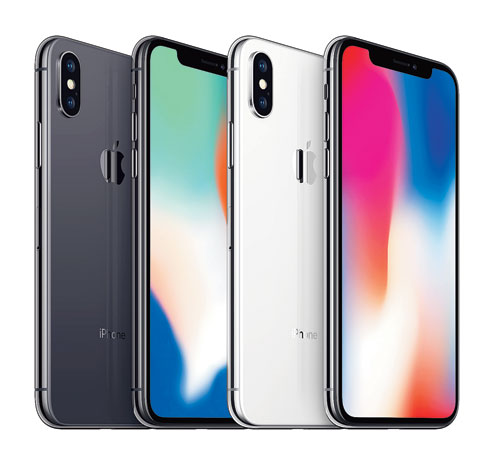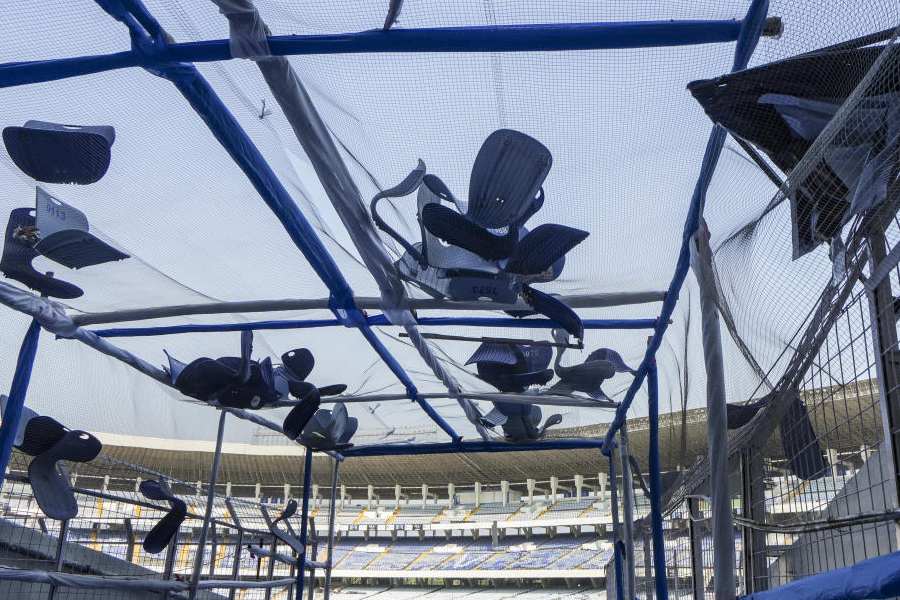Sennheiser HD 820

How do you take one of the most supremely designed pieces of audio gear, the Sennheiser HD 800, and make it better? With the $2,400 HD 820, Sennheiser has employed a novel approach — concave plates of Gorilla Glass — to contain the glorious sound of its powerful drivers and prevent sound leakage, both from within and without, without falling prey to the unwelcome reverberations that plague many high-end closed-back headphones. Full marks for innovation!
Lenovo Smart Display

Google’s Assistant spent the good part of last year being overshadowed by Amazon’s Alexa voice assistant, but come CES 2018, Google has a bevy of small, connected displays powered by Google Assistant, and my pick of the lot is the Lenovo Smart Display. It comes in two sizes — an 8-inch 1,280 x 800 display and a 10-inch 1,920 x 1,200 variant — and both use the screen to show you additional information based on your conversations with Assistant — nearby establishments or a relevant YouTube video — and also let you video-dial a contact over Google Duo.
DJI Osmo Mobile 2

The first-gen Osmo handheld smartphone stabiliser impressed with its smooth, pro-grade results last year. But its $299 (Rs 29,999 in India) price put it out of reach of many. The Osmo Mobile 2 launches at a much more affordable $129, can be tripod-mounted and comes with an app to capture time-lapse and other complex handheld shots. But crucially, it offers three times the battery life of its predecessor. A steal if I ever saw one!
LG Rollable OLED TV

LG’s latest TV prototype at CES reads like one of the many 65-inch TVs in its portfolio — it uses OLED tech, pushes out 4K resolution and is simply stunning. But it comes with a special party trick — push a button and it can roll all the way down into a discreet base (much like a projector screen rolls into its casing) and it can even adopt different aspect ratios, like going from its native 16:9 to a wider 21:9 cinema mode or a narrow mode to show off just the weather or calendar details.
Vuzix Blade AR Glasses

The Blade takes Vuzix’s augmented reality glasses and pairs them with the Alexa voice assistant — imagine all of Alexa’s skills with Zomato, Saavn, your smart lights, being controlled via your smart glasses! Vuzix’s solution comes with one distinct advantage — there’s a floating screen overlaid across your view of the world, which allows visual assistance to your voice commands… say when you’re looking for directions and the glasses pop up a map/route to show you the way.
The Wall by Samsung

CES is always packed with new TVs, but few impressed this year as much as Samsung’s “The Wall”. As the name suggests, the 146-inch giant screen can occupy a whole wall, but it’s not made of one single LCD panel. Instead, it uses a modular approach to merge multiple borderless TVs, each pumping out 4K resolution using MicroLEDs, millions of tiny LEDs arranged in an array. And since it’s modular, if you want a TV that’s not quite as massive, just use fewer panels!
Sony LSPX-A1 4K Projector

I often berate CES for showing off maddeningly desirable yet virtually unattainable products, and the Sony LSPX-A1 Ultra Short Throw 4K Projector is one of them. It’s capable of projecting a 120-inch screen from just 9.6 inches away from the wall — a bright 2,500 lumens, HDR-capable image at that — and is coupled with the excellent sound system that’s built into its coffee-table frame. This has the makings of the ultimate living room cinema. It’ll only set you back by a cool $30,000, so yeah… virtually unattainable.
L’Oreal UV Sense

Wearables are synonymous with fitness trackers, but the UV Sense from L’Oreal turns that notion on its head. It’s a tiny UV sensor no bigger than a thumbnail — in fact, it adheres to your thumbnail — that tracks the sun exposure you receive each day, and communicates this to you via a mobile app… all without a battery! A step towards a series of minimally invasive micro-wearables in the future? Sign me up!
Razer Project Linda

The idea behind Razer’s Project Linda concept is simple: it’s a laptop dock for the recently released Razer Phone that turns the phone into a full-blown laptop running a desktop-style Android interface. The phone fits in where the trackpad would normally be — a rather more elegant solution than having it sit in some dock — and acts as the brains of the whole device. Not only do you get a large screen and a full keyboard to interact with Android apps, Linda also adds in extra storage, a battery to charge the phone while it’s docked and some USB ports.
Nvidia Drive Xavier chip

With so many cutting-edge cars on display, it’s a surprise that CES isn’t dubbed the ‘Cars and Electronics Show’. Yet, the most promising announcement about autos came from Nvidia, in the form of its Xavier system on a chip. Imagine a supercomputer packed into the size of a car number plate that has the power to achieve even the most ambitious of self-driving goals — Xavier packs in nine billion transistors, eight cores, a 512-core graphics unit, 8K HDR video processing and a “deep learning accelerator”. All of these come together to take inputs from the cars radar, lidar, cameras and ultrasonic sensors to deliver level five autonomy, the absolute holy grail of self-driving tech, one where even a steering wheel won’t be required!
Tushar Kanwar is a tech columnist and commentator. Follow him on Twitter @2shar.
Mail your tech queries to t2onsunday@abp.in










